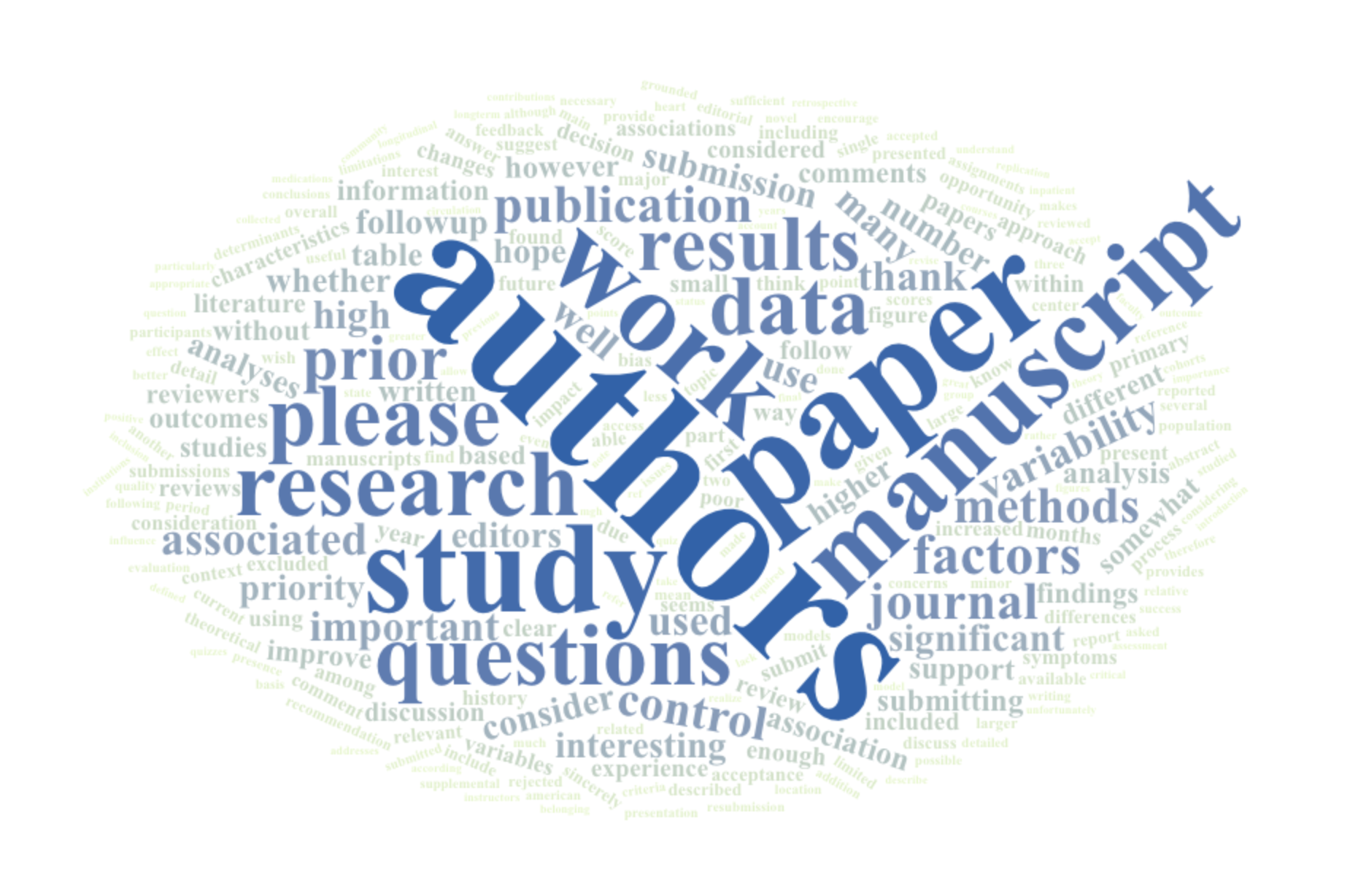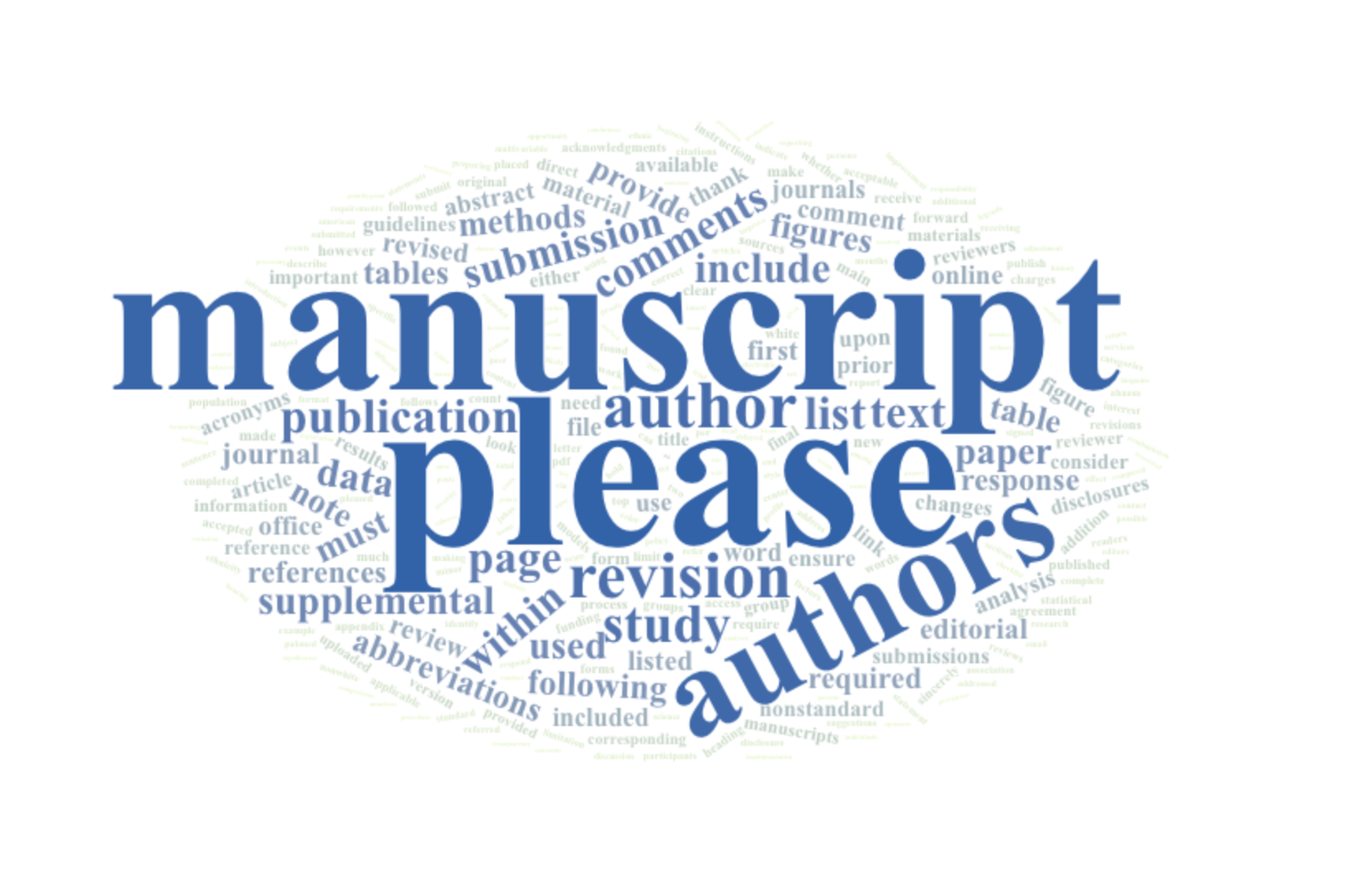Analyzing Six Years of Academic Paper Rejections
A number of months ago, my first first-author academic paper was published. I was already a coauthor on a handful of papers, but this was the first one I felt a strong sense of ownership over. It was the kind of thing I didn’t need to actually celebrate because I felt so gleeful at it finally happening, cake wasn’t going to add anything.
What I’d like to talk about here is what happened before that. Before the congratulations email from the journal we published in–which is not a congratulations so much as a request for you and everyone you know (okay, all the coauthors) to fill out a bunch of disclosure forms–I got a whole parade of very different emails from academic journals and conferences: rejections.
I was doing research for 6ish years before I published anything. What no one tells you about academia is that it can take a lot of time to build up enough experience to have major successes. Early on, you have very little control over your outcomes. Hard work and persistence are required, and so are mentorship and the success of an experienced advisor (or, if you’re lucky, as I have been, many experienced advisors).
I was surprised to learn that research doesn’t inevitably lead to publications. You work on projects and some of them turn into papers quickly and some of them don’t. Some take many iterations of tweaking the initial question, asking follow-up questions, getting great reviews except one person who thinks your paper is irrelevant, and so on. Some p-values are less than 0.05, and some are 0.97.1 I was exclusively rejected for years before I got published.
Cultivating Confidence
I’ve worked with enough experienced principal investigators to know that rejections are part of academia no matter how successful or far into your career you are. My theory is that successful researchers have just perfected the art of not letting the rejections change their mind about the worth of their research or their ability to pull it off.
That’s a totally different undertaking for people from marginalized or underrepresented groups, who face the task of cultivating intellectual self-assurance in a field where they’ve likely been underestimated, dismissed, and/or experienced blatant hostility. Discrimination absolutely happens in academia. So, when it comes to convincing yourself that you have something to say or discover or elucidate and that you’ll eventually be heard by the academic community, that’s also just not equally true for everyone. The underrepresentation of BIPOC people and queer people and disabled people and women in academia isn’t caused by those people not believing in themselves. Yet, I believe the disparity in access to the conviction of one’s merit is one of the ways that inequity in academia plays out.
There are so many secrets of the trade. I believe that one of them is the sheer magnitude of rejection and its universality. It’s happening to everyone.
I’m not totally sure how a person develops that unwavering conviction of their merit. One effort I’ve made is to look back at the rejections in those moments when I feel like I’m doing great. If I can laugh about rejections in those moments, I can hopefully hang onto that vantage point next time it feels like rejections are all there is out there for me.
So, I compiled and analyzed those 6 years of academic rejections.
Before I get to the analyses, I’ll tell you about my favorite (least favorite?) rejection.
One Memorable Rejection
In college, I was working on a research project and we were hoping to submit a paper to a conference. As the deadline drew near and the paper wasn’t coming together quickly enough, the professor I was working with declared that we wouldn’t have enough time to submit. For some reason, I took this personally (not something I’d recommend), and I stayed up all night the night before the deadline to finish the paper (also not something I’d recommend). It was the only all-nighter, or anything close to it, that I pulled in college.
We submitted the paper, the reviews came back, and they were scathing. I’m sure if the reviewers knew the paper had been primarily written by college students, they’d have been much more gentle with their feedback.
There’s one line from one of the reviews that I’ll never forget: “There is probably an interesting story here, but the current paper doesn’t seem to find it.”
At the time, it really stung. Now, it makes me laugh, because they were right. I had just started learning how to analyze and write about data. These things take time. I hadn’t found the story.
Needless to say, the paper wasn’t accepted to the conference.
This was one of the many rejections I compiled for these analyses.
Methods
I went through every email address I could remember getting paper rejections at, found all the rejections I could find, and put those rejection letters along with the accompanying reviews into a huge text document (the corpus). It ended up being a 47-page, single-spaced, size 11-point font document.
Then, I took the corpus and made a word cloud. Words that appear more often in the corpus are larger in the accompanying word cloud. I also made words that appear more often darker in this word cloud.
Word clouds are notoriously poor visual representations of information if you’re aiming for precision and accuracy, but my goal here was to capture the essence of the rejections, so the word cloud seemed perfect.
I removed little words like “the” and “and” as well as any words describing the topic of the research (e.g., I removed “depression” because we used depression as an outcome variable).
Results
Here’s the rejection word cloud:

A few words jump out as possibly suggesting rejection, such as “priority” (often journals tell you your paper is important but isn’t a high enough priority for them to publish it). Some words seem generally negative, such as “variability,” and “excluded.” “Important” and “thank” feel like they could be part of a polite rejection. Honestly, though, if you told me this word cloud was based on paper acceptances, I’d believe it.
So, I decided to make a word cloud based on the paper acceptances I’ve received and the accompanying reviews. One obvious issue here is that I’ve published multiple papers in the same few journals, and the acceptance email is a template email that’s practically the same every time, so any words mentioned there are going to be weighted heavily even if they wouldn’t be associated with acceptances at other journals. Let’s see what we see anyway.

I find the two word clouds remarkably similar. “Please” jumps out in the acceptances. Here’s an example of how it was used in the acceptance and rejection corpuses:
- Acceptance: “Please include first and last names for each author.”
- Rejection: “Please could the authors justify why they reported…”
“Prior” and “questions” seemed particularly associated with paper rejection. Looking in the corpuses, it seemed both of those were used many times in specific reviews. Reviewers noted things like “research questions are much too broad” and “it is not clear to me why prior dementia and prior depression are treated differently” and then referenced those same points multiple times in their reviews.
To more scientifically evaluate which words differentiate acceptances and rejections, I also made a comparison word cloud. Comparison clouds plot the differences in word frequency between two sets of documents. Here’s the comparison cloud for the rejections vs. the acceptances:

On the “accepted” side, most of the words seem to come from the info journals share along with acceptances regarding formatting guidelines. During this process, apparently journals use the words “please” and “manuscript” a lot. The rejected side is less clear. Many of the words seem to be words you’d use when critiquing a paper, “associations,” “outcomes,” “factors”. Are these words particularly negative? I don’t think so. They’re just words that wouldn’t be used as much if reviewers weren’t pointing out weaknesses in the paper; reviewers would be much less likely to specify, “great job operationalizing these outcomes,” than to comment something like, “please include Kaplan-Meier curves for other outcomes” (an actual quote from one of the rejections). I will say, this word cloud supports my assertion that the word “priority” is a bad sign.
In the end, I think I captured the essence of communication with academic journals more so than the essence of rejection emails and reviews. It turns out, the content of rejections isn’t actually that different from the content of acceptances. One interpretation of this could be that rejections and acceptances aren’t so different after all; both are likely to point out weaknesses in your paper, and hopefully also specify its strengths, though there’s certainly more room for that in both rejections and acceptances. Another interpretation is simply that the English language is complex and single words don’t summarize a message. I’ll leave the interpretation up to you.
I’ve been rejected a lot2 and it’s been disappointing and frustrating and discouraging. It’s going to keep happening and it’s going to keep being those things.
We have to make room for mistakes, failure, and rejection in our definitions of success. That’s true in academia, and in our lives in general. Next time you’re feeling insecure about your merit, you have my wholehearted encouragement to remind yourself you can experience massive amounts of rejection even when you’re actually crushing it.
P.S. As usual, here’s a link to download the code I used to wrangle the data and create these visualizations.
P.P.S. If you would like to receive an email when I publish a new post, please fill out this google form.
